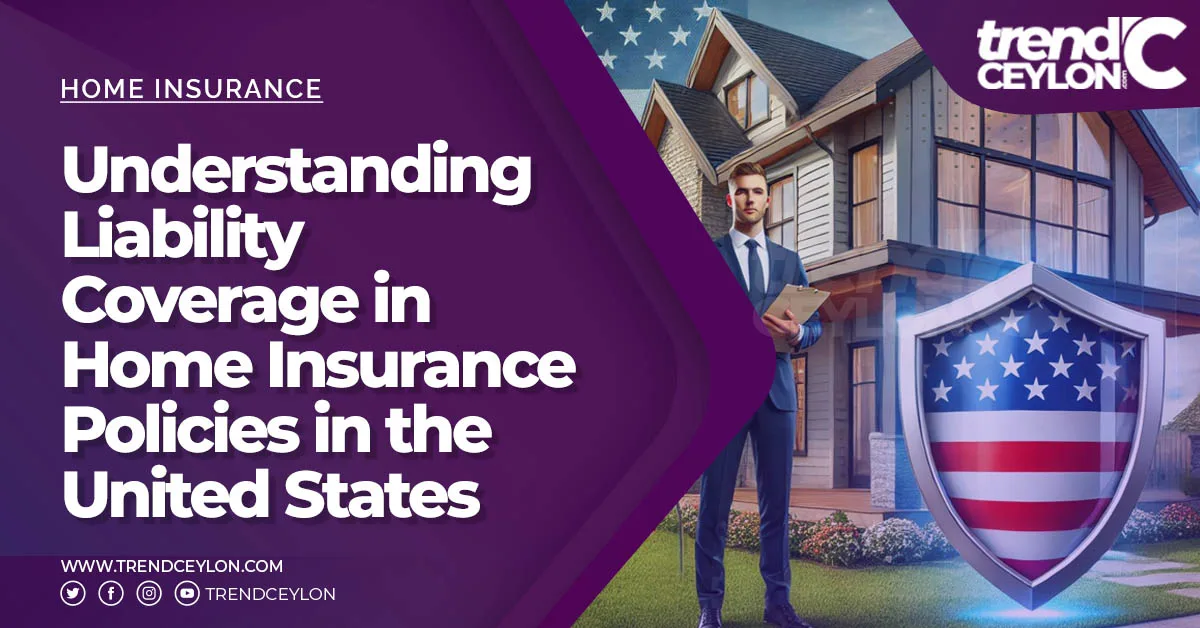When you think of home insurance, you might picture protection for your house and belongings against disasters like fires or storms. However, one of the most important—and often overlooked—aspects of home insurance is liability coverage. This crucial component can save you from significant financial hardship in the event of lawsuits or accidental damage caused to others. Let’s break down liability coverage, how it works, and why it’s an essential part of your home insurance policy.
1. What is Liability Coverage in Home Insurance?
Liability coverage is a core component of most standard home insurance policies, designed to protect you financially if you are found responsible for injuries or property damage to others.
- Covers medical expenses, legal fees, and damages if someone is injured on your property.
- Extends to damage caused by you or your family members to someone else’s property.
- Includes coverage for legal defense costs in case of lawsuits.
This coverage ensures you’re not left paying out of pocket for accidents or claims that could otherwise lead to financial ruin.
2. What Does Liability Coverage Typically Include?
Liability coverage provides broad protection for various scenarios, offering peace of mind for homeowners.
- Bodily Injury: Covers medical expenses and legal costs if someone is injured on your property due to negligence, such as slipping on an icy walkway.
- Property Damage: Pays for repairs or replacements if you or your family accidentally damage someone else’s property.
- Personal Injury Claims: Covers lawsuits related to defamation, libel, or slander, depending on your policy.
- Dog Bites and Pet-Related Incidents: Many policies cover injuries caused by pets, although some breeds may be excluded.
Understanding what’s included helps you identify any gaps in coverage that might need to be addressed with endorsements.
3. What is Not Covered by Liability Insurance?
While liability coverage is comprehensive, it doesn’t cover every situation. Here’s what typically falls outside its scope:
- Injuries to You or Family Members: Liability coverage only applies to third-party injuries or damages.
- Intentional Acts: Damage or injuries caused deliberately by you or a family member are excluded.
- Business-Related Liabilities: If you run a business from home, you’ll need separate business insurance for liability protection.
- Automobile Accidents: These are covered under your auto insurance policy, not home insurance.
Knowing the exclusions helps you avoid surprises in case of a claim.
4. How Much Liability Coverage Do You Need?
The amount of liability coverage you need depends on your lifestyle, assets, and risk exposure.
- Most standard policies offer liability limits ranging from $100,000 to $500,000.
- If you own significant assets, consider increasing your coverage limit to protect against lawsuits that exceed your policy’s limits.
- High-net-worth individuals or those with unique risks should consider adding an umbrella insurance policy for extended protection.
Discussing your needs with an insurance agent can help determine the right level of coverage for your situation.

5. How Does Liability Coverage Work in Practice?
If someone files a claim against you or sues you for damages, your liability coverage steps in to protect you.
- Filing a Claim: Notify your insurer immediately about the incident, providing all relevant details and documentation.
- Investigation: The insurer investigates the claim, assessing fault and damages.
- Legal Defense: If a lawsuit is filed, your insurance covers attorney fees, court costs, and settlements up to your policy limit.
This streamlined process ensures that you’re protected from the financial burden of unexpected claims.
6. Liability Coverage for Renters vs. Homeowners
While liability coverage is a standard feature in homeowner policies, it’s equally important for renters.
- For Renters: Liability coverage protects renters against claims for injuries or damages caused by their actions, even though they don’t own the property.
- For Homeowners: Homeowners also benefit from coverage that protects their property and assets against liability claims.
Both renters and homeowners should ensure their policies include adequate liability protection.
7. Common Scenarios Where Liability Coverage Applies
Liability coverage is versatile and applies to a wide range of situations, such as:
- Slip-and-Fall Accidents: A delivery person slips on your icy driveway and requires medical treatment.
- Property Damage to Neighbors: A tree in your yard falls and damages a neighbor’s home or car.
- Pet-Related Incidents: Your dog bites a visitor, resulting in medical expenses and a potential lawsuit.
- Hosting Events: A guest at your party trips and sues you for injuries.
These everyday scenarios highlight the importance of having robust liability coverage.
8. How to Maximize Your Liability Coverage
To ensure you’re fully protected, consider these tips for maximizing your liability coverage:
- Increase Your Limits: Opt for higher coverage limits if you own valuable assets or frequently host guests.
- Add Endorsements: Include additional coverage for risks like dog bites or home-based businesses.
- Bundle Policies: Combine home and auto insurance policies with the same provider for extended liability protection.
- Consider an Umbrella Policy: For added peace of mind, purchase umbrella insurance to cover liability claims that exceed your standard policy limits.
Maximizing your coverage helps safeguard your financial future against unforeseen risks.
9. Liability Coverage for High-Risk Homes
Certain homes or lifestyles pose greater liability risks, requiring tailored coverage.
- Swimming Pools: Pools increase the likelihood of injuries and may require additional liability coverage.
- Trampolines: Trampoline-related accidents often necessitate higher policy limits or endorsements.
- Vacation Rentals: Renting out your home via platforms like Airbnb may require specialized liability coverage.
Identifying and addressing these risks ensures you’re adequately protected.
10. The Cost of Liability Coverage
Liability coverage is generally one of the most affordable components of a home insurance policy.
- Base Cost: Included in most standard home insurance policies at no additional charge.
- Cost for Higher Limits: Increasing your liability limits from $100,000 to $500,000 typically costs less than $50 annually.
- Umbrella Policies: Additional coverage of $1 million or more costs about $150 to $300 per year.
The low cost of liability coverage makes it a high-value investment for homeowners and renters alike.
Conclusion: Liability Coverage is Essential for Financial Protection
Liability coverage is a critical aspect of home insurance that safeguards you from financial losses caused by accidents, injuries, or lawsuits. By understanding what’s covered, identifying your specific risks, and maximizing your coverage, you can ensure your home and assets are protected. Whether you’re a homeowner or renter, having sufficient liability insurance offers peace of mind in an unpredictable world.

















